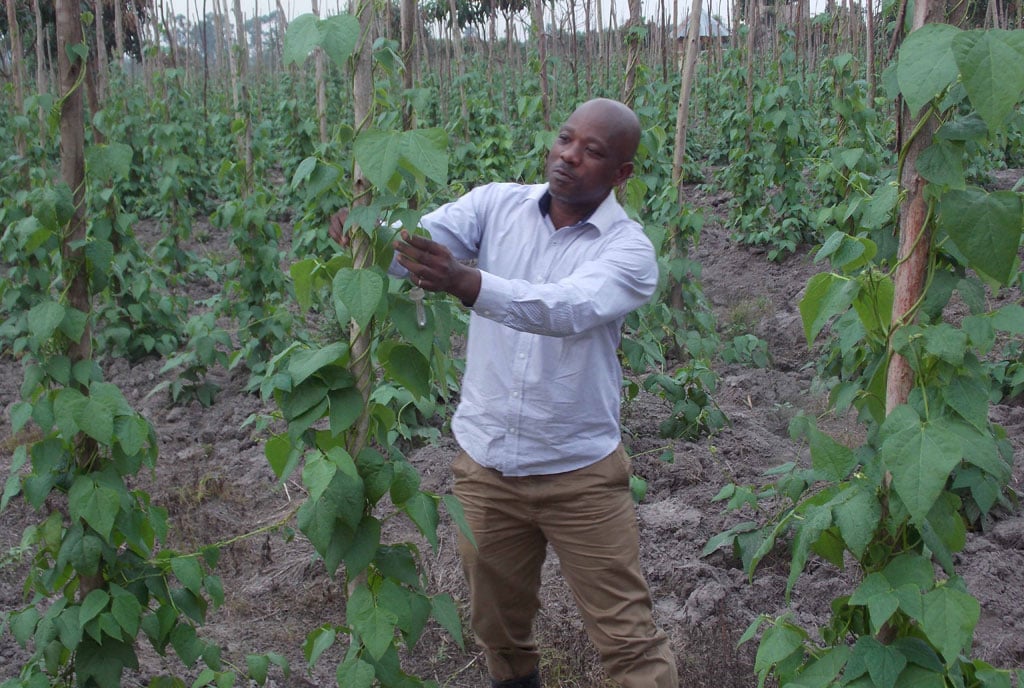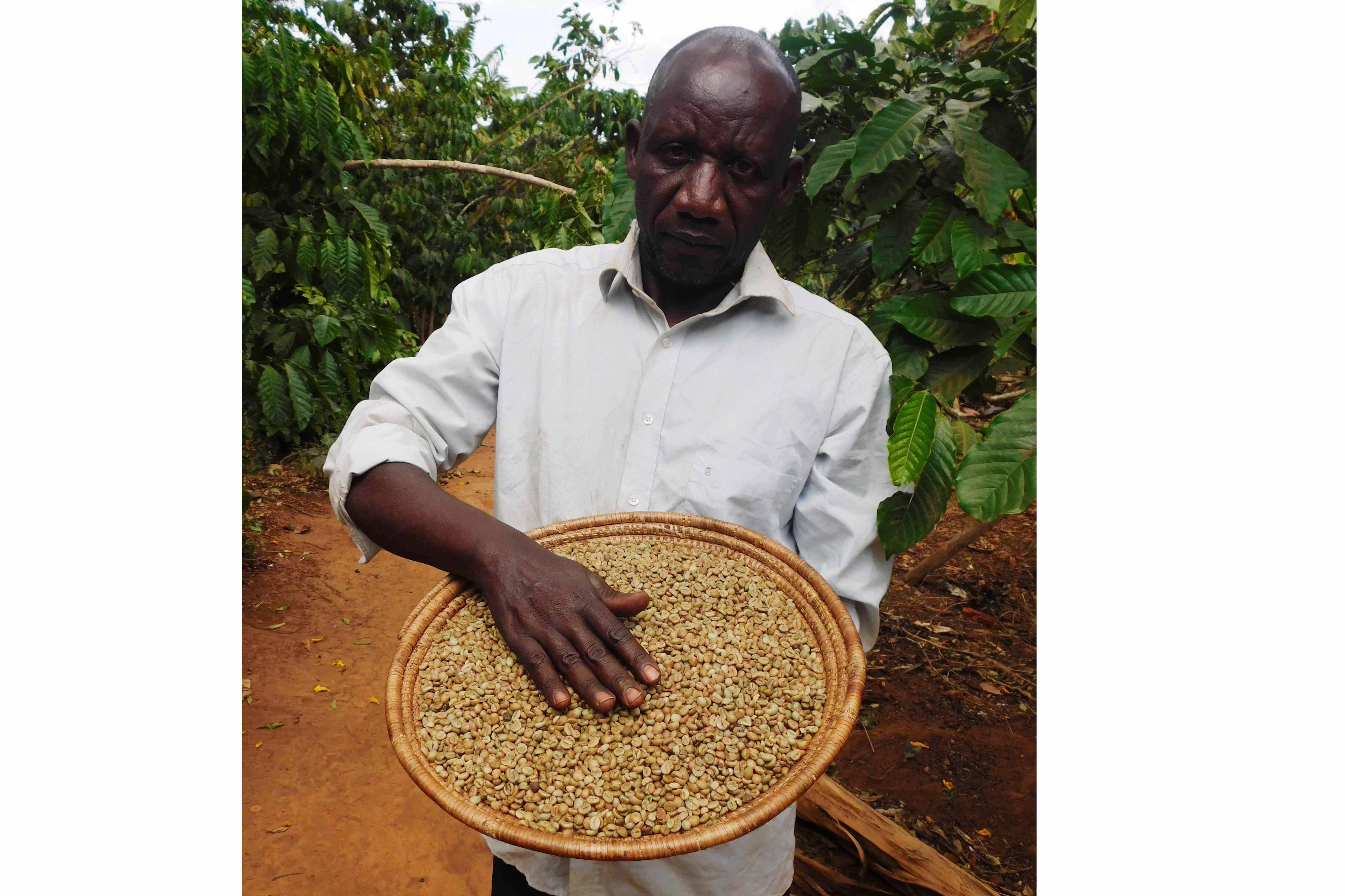
A farmer sorts beans for planting ahead of rainy season. PHOTO/MICHEAL J SSALI
There are a number of bean varieties farmers are growing across the country including Nambale, K131, k132, bush beans Nabe 15, Narobean 1, Narobean 2, Nabe 18, Narobean 3, and Nabe 16, climbing beans Narobean 4C and 5C.
Much as the above bean varieties contain economic and nutritional value, experts contend the bush sugar bean variety contains better economic and nutrition value which farmers must take up.
The bush sugar bean variety is bright red in colour mixed with speckles on pale cream seed base.
Background
Sugar bean is part of the common bean also known as phaseolus vulgaris which originated as a wild vine in Central and South America.
Thanks to generations of indigenous food growers cultivating beans over many millennia, there are thousands of varieties within the phaseolus vulgaris species grown around the world today including Uganda. The dry bean is an important field crop because of its high protein content and dietary benefits.
Soil preparation
The soil needs to be ploughed or ripped to a depth of 300mm then levelled to get a good tilth.
The soil needs to be firm at planting and a level seedbed prepared to ensure even germination.
A level firm seed bed ensures good surface contact between the seed and soil. Planting depth of the seed should be 2.5cm to 4.5cm below the soil surface.
Celsius
The maximum temperature during the flowering period should not exceed 30 degrees Celsius as high temperatures will cause flower drop and thus low pod set, resulting in depressed yields.
Beans require a minimum of 400mm to 500mm rain fall during its growing season but totals of 600mm to 650mm is considered ideal.
Spacing
The optimum spacing between rows is 75cm. A spacing of 90cm is also used when agricultural machinery is set up for planting.
Seed spacing in row is between 60mm to 75mm. Generally, around 177,000 to 200,000 plants per hectare will give good results.
Fertiliser application
Beans will do best with a soil pH of 5.8. They are very sensitive to acidic soils. If the pH is not at these levels then apply lime as per the soil sample recommendations.
Beans can be planted into soils which have been well fertilised for previous crops though slight top ups at planting will be beneficial.
A rate of 250kg per hectare of compound ”D” drilled in with the planter or broadcasted with a vicon before the final disking before planting.
Application of calcium sulphate (Gypsum) at 250kg per hectare as a top dressing just prior to flowering will help with pod set.
If a previous crop residue has been ploughed, then extra Nitrogen will be needed to help composting or breaking down of the material.
Weed problems
This is very important in growing a dry bean crop. Bean plants compete poorly with weeds as they are low growing and do not overshadow weeds. Weeds that are not controlled will interfere with the harvesting and threshing of the crop.
Farmers can address weed challenges using mechanical methods right from seed bed preparation by removing weeds from the garden.
This can be repeated after the plants have grown by cultivating in between the rows to loosen the soil for aeration.
Pest and disease control
There are pests such as aphids and white flies which are sap sucking and leaf minor which predisposes the beans to secondary bacterial infections. Diseases such as rust, angular leaf spot and anthracnose (fungal), common and halo blight (bacterial), bean mosaic viral are common.
Its symptoms include curled and malformed leaves that have alternate dark green and light green areas giving the mottled or mosaic effect. It is spread by aphids.
Others are bacterial diseases such as common blight leading to large necrotic lesions surrounded by bright yellow chlorotic areas. It cause leaves to drop prematurely and farmers are encouraged to avoid excessive irrigation.
Control
Farmers are advised to use only herbicides, pesticides and fungicides that are recommended to sugar bean to avoid damage to the plant.
Chemicals can be toxic, so always follow instructions on the product package or from the agro-dealer for safe use. Also follow the instructions about the time needed between spraying and safe consumption of fresh pods.
Wear protective clothing when this is recommended and do not store chemicals in the same place as food.
Harvesting
Start harvesting when the leaves and pods are dry and yellow- brown. Sugar bean reaches physiological maturity when moisture is 50 percent, harvest when moisture is 16 percent.
Harvest by handpicking dry pods or by cutting the plants at ground level using a sickle or pulling by hand. Leave the roots on farm to improve soil fertility. Dry the pods or the plants with pods in the sun on a clean surface such as tarpaulin, on a slab or on a raised solid platform.
Dry for about two days and do not dry the pods on the soil. Gently thresh the pods on a clean surface but avoid splits.
Clean the grains by winnowing to remove, dust and other rubbish. Also remove shrivelled, diseased, broken grains and other weeds.
Planting
Generally late February or early March at the onset of rains in the highland and lowlands and right through to mid-August in the second season.



